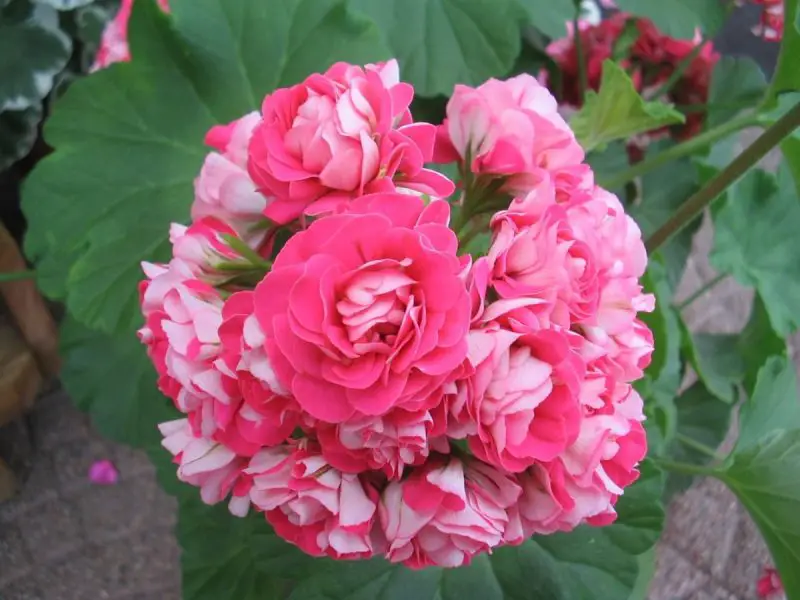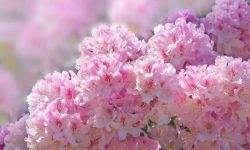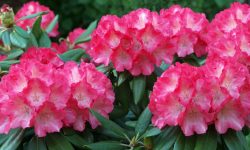Geraniums are a gardener’s favorite for good reason — their vibrant blooms and lush foliage bring life and color to any space, whether in garden beds, containers, or hanging baskets. Easy to grow yet stunning in appearance, these versatile plants can brighten your outdoor or indoor spaces throughout the growing season. If you’ve ever wondered how to grow geraniums that thrive and bloom beautifully, this expert guide will walk you through everything you need to know.
From choosing the right variety to mastering watering, fertilizing, and pruning techniques, growing healthy geraniums is simpler than you think. With a little care and the right tips, you can enjoy endless bursts of color and lively greenery all season long. Get ready to transform your garden with geraniums that flourish and impress!
Understanding Geranium Varieties

Different Types of Geraniums
Geraniums, scientifically classified under the genus Pelargonium, come in a variety of forms that suit different gardening styles and purposes. The most common type is the zonal geranium (Pelargonium × hortorum), easily identified by its rounded leaves featuring distinctive dark “zones” or blotches, which give the plant its name. These geraniums produce large, colorful flower clusters in shades ranging from red and pink to white and purple, making them a staple in flower beds and containers.
Ivy geraniums (Pelargonium peltatum) differ notably with their trailing growth habit and glossy, ivy-shaped leaves. This makes them perfect for hanging baskets, window boxes, or cascading over garden walls, adding vertical interest and vibrant draping color. Ivy geraniums tend to have smaller flowers but bloom profusely when grown in the right conditions.
Scented-leaf geraniums are a unique group prized more for their aromatic foliage than their blooms. They come in various scents such as lemon, rose, mint, and even chocolate. While these varieties typically produce fewer flowers, their fragrant leaves can add sensory appeal to your garden or indoor space. They also have different growth habits and may require slightly different care compared to flowering geraniums.
Choosing Geraniums for Your Climate
Geraniums generally thrive in temperate climates with mild winters, where they can often survive outdoors year-round. In regions with harsh winters or frequent frosts, geraniums are usually grown as annuals or brought indoors before the first cold spell to protect them from damage. For these colder areas, gardeners often propagate new plants from cuttings each year or overwinter potted plants indoors in bright, cool spaces.
In warm climates, geraniums can flourish as perennials, blooming continuously with the right care. Some varieties, such as zonal geraniums, are hardy and adapt well to a range of conditions, including hot summer sun. In contrast, ivy geraniums prefer slightly cooler, shadier spots and may suffer in intense heat without protection.
Selecting the appropriate geranium variety for your climate is crucial. For example, zonal geraniums suit gardens with full sun and well-draining soil, while ivy geraniums excel in containers that can be moved to shaded areas during peak heat. Knowing your local climate’s impact on geranium growth helps you provide optimal care, extend blooming periods, and reduce maintenance challenges.
Preparing to Plant Geraniums
Selecting the Right Location
Geraniums thrive best in locations that offer plenty of sunlight. Ideally, they need at least six hours of direct sun daily to produce abundant and vibrant blooms. In regions with very hot summers, however, geraniums can benefit from some afternoon shade to protect their leaves from scorching and prevent stress. Good air circulation around the plants is equally important to reduce humidity and minimize the risk of fungal diseases. When choosing a garden spot, avoid areas prone to standing water or poor drainage, as soggy soil can cause root rot. For container gardening, select pots with ample drainage holes to allow excess water to escape, and position containers in sunny spots where they receive adequate light without becoming waterlogged.
Soil Preparation and Fertilization
The key to healthy geranium growth lies in preparing fertile, well-draining soil before planting. Begin by loosening the soil in your garden bed and mixing in organic amendments like compost, well-rotted manure, or peat moss. These materials improve soil texture, boost nutrient content, and enhance drainage, which helps roots breathe and prevents waterlogging. Geraniums prefer soil that is slightly acidic to neutral, with a pH between 6.0 and 7.0, so testing your soil can help you make adjustments if needed. When planting in pots or containers, choose a high-quality commercial potting mix formulated for flowering plants. Such mixes retain moisture without becoming soggy and provide enough aeration for healthy root development. At planting time, apply a balanced fertilizer, either granular or liquid, to supply essential nutrients that encourage strong roots and lush foliage. This initial feeding sets the stage for vigorous growth and prolific flowering throughout the season.
Planting Geraniums
Starting from Seeds vs. Cuttings
Growing geraniums from seed is possible but less common. Seeds take longer to germinate and may produce varied plants. Many geraniums are hybrids, so seeds might not match the parent plant exactly. Propagating by cuttings is faster and more reliable. Cuttings root quickly and keep the same flower color and growth traits. Gardeners wanting consistent, quick results prefer cuttings over seeds.
While growing geraniums from seeds is possible, propagation by cuttings is far more popular and effective. Seeds often take a long time to germinate and may produce plants that differ from the parent, especially since many geraniums are hybrids. On the other hand, cuttings root quickly and reliably, ensuring the new plant retains the exact flower color, leaf shape, and growth habit of the parent. This makes cuttings the preferred method for gardeners who want faster, more consistent results with less effort and time.
How to Plant Geraniums Correctly
When transplanting geraniums, plant them at the same soil depth as before. Space plants 8 to 12 inches apart for good airflow. This helps reduce diseases caused by overcrowding. For cuttings, insert stems into moist, sterile rooting mix. Keep the cuttings upright and stable until roots grow. Water gently after planting to settle the soil and remove air pockets.
When transplanting geraniums from nursery pots or planting cuttings, place them at the same depth they were growing previously. Maintaining a spacing of 8 to 12 inches between plants helps improve air circulation, which reduces the risk of fungal diseases and pest problems. For cuttings, insert the stem into moist, sterile rooting medium, keeping it upright and secure until roots develop. After planting, water gently to settle the soil around the roots and eliminate air pockets, which encourages healthy root establishment and faster growth.
Caring for Geraniums
Watering Requirements
Watering is a vital part of keeping geraniums healthy and vibrant. These plants prefer soil that stays evenly moist but never soggy, as overly wet conditions can cause root rot. A good rule of thumb is to water when the top inch of soil feels dry to the touch. Deep watering encourages roots to grow deeper, improving drought tolerance over time. Avoid watering from above, which can promote fungal diseases like powdery mildew; instead, water directly at the plant’s base. During hot or dry weather, increase watering frequency, but always allow the soil to dry out slightly between waterings to prevent overwatering stress.
Consistent watering schedules are key to preventing stress in geraniums. Underwatering can cause wilting and reduced blooming, while overwatering encourages root diseases. Using mulch around the base can help retain soil moisture and regulate temperature, reducing the need for frequent watering. During rainy seasons, be mindful of soil drainage and avoid puddling around the plant. If grown indoors, monitor humidity levels, as dry air can affect the plant’s health.
Fertilizing for Continuous Blooms
Geraniums respond well to consistent feeding throughout their growing season. Applying a balanced, water-soluble fertilizer every 4 to 6 weeks supplies essential nutrients like phosphorus and potassium, which support flower production and root health. Avoid fertilizers with excessive nitrogen, as they encourage lush leafy growth but fewer flowers. For a more hands-off approach, slow-release fertilizers applied at planting can provide steady nutrition over several months. Proper fertilization not only enhances bloom quantity and quality but also strengthens the plant’s overall vigor.
Along with regular fertilizing, it’s important to adjust feeding based on the plant’s growth stage. Young plants and new transplants benefit from slightly reduced fertilizer to avoid burning delicate roots. When flowering begins, switching to a bloom-boosting fertilizer with higher phosphorus content can enhance flower size and color vibrancy. Always follow label instructions carefully to prevent nutrient buildup, which can damage roots and reduce flowering performance over time.
Pruning and Deadheading
Pruning is important for maintaining geraniums’ compact shape and promoting healthy, dense growth. Regularly pinch or cut back leggy stems to encourage branching and a bushier appearance. Deadheading spent flowers removes seed heads, preventing energy diversion and encouraging the plant to produce more blooms. Pruning also improves airflow within the foliage, which reduces humidity and helps prevent fungal diseases. For zonal geraniums, a hard prune in early spring is beneficial. This severe cutting back rejuvenates the plant and sets the stage for a robust and floriferous growing season.
Besides shaping the plant, pruning can also help manage pest infestations by removing affected or weakened growth. Deadheading not only prolongs the blooming period but also tidies the plant’s appearance. For plants that get woody or overgrown, pruning can stimulate fresh, vigorous shoots from the base. Regular maintenance encourages a healthy lifecycle, making geraniums more resilient to seasonal stresses and ready to bloom beautifully year after year.
Dealing with Common Geranium Problems
Pest Management
Geraniums often attract pests like aphids, spider mites, whiteflies, and caterpillars, which can damage leaves and stunt growth. Regularly inspect your plants, especially the undersides of leaves where pests tend to hide. Early detection makes control easier and prevents infestations from spreading. Organic pest control options such as insecticidal soap and neem oil work well to reduce pest populations without harming beneficial insects or the environment. Additionally, encouraging natural predators like ladybugs, lacewings, and predatory mites in your garden can keep pest numbers low. For severe infestations, targeted chemical treatments may be necessary, but should be used sparingly and according to label instructions.
Disease Prevention
Fungal diseases such as botrytis (gray mold), rust, and leaf spot are common problems in geraniums, especially in warm, humid, or overcrowded conditions with poor air circulation. To prevent these diseases, avoid overhead watering which wets leaves and encourages fungal growth. Instead, water at the base of the plants early in the day to allow foliage to dry quickly. Prune densely growing branches to improve airflow and remove any infected or dead leaves promptly to stop the spread of disease. If a fungal infection occurs, treat the plant promptly with appropriate fungicides such as copper-based or sulfur sprays. Maintaining good garden hygiene and spacing plants properly will also reduce disease risk over time.
Troubleshooting Bloom Issues
When geraniums fail to bloom as expected, the cause often lies in environmental or care factors. Insufficient sunlight is the most common reason; geraniums require at least six hours of direct sunlight to flower well. Excessive nitrogen fertilizer encourages lush leaf growth but suppresses flower production, so switch to a fertilizer with balanced or higher phosphorus content during blooming. Overcrowding plants limits airflow, increasing disease pressure and weakening flowers. Regular deadheading, which removes spent blooms, redirects the plant’s energy toward producing new flowers and extending the blooming period. By addressing these common issues—light, nutrition, spacing, and deadheading—gardeners can restore healthy, vibrant blooms.
Overwintering Geraniums
Bringing Geraniums Indoors
In areas with cold winters, it’s essential to bring geraniums indoors before the first frost arrives to protect them from freezing temperatures. Choose a location with plenty of natural light, such as a south-facing window, where the plants can receive at least 4 to 6 hours of bright indirect sunlight daily. Indoor temperatures should ideally be cool but not freezing—between 50 and 60 degrees Fahrenheit (10 to 15 degrees Celsius)—to help the plants enter dormancy and conserve energy. Water sparingly during winter; overwatering can cause root rot because the plants’ growth slows down significantly. Regularly check for dead or yellowing leaves and prune them to maintain a neat shape and prevent disease buildup. Avoid placing geraniums near heat sources or drafts to reduce stress.
Propagating for the Next Season
Late summer or early fall is the best time to take cuttings from your healthy geranium plants to prepare new ones for the following spring. Select non-flowering shoots about 4 to 6 inches long, making clean cuts just below a leaf node. Remove the lower leaves and dip the cut end in rooting hormone to encourage faster root development. Plant the cuttings in a sterile, well-draining rooting medium, and maintain high humidity by covering them with a plastic dome or placing them in a propagation tray. Keep the environment warm—around 70 to 75 degrees Fahrenheit (21 to 24 degrees Celsius)—to improve rooting success. Once roots form, gradually acclimate the young plants to lower humidity and normal growing conditions. Propagating geraniums this way is an economical and efficient strategy to maintain a vibrant garden year after year.
Creative Ways to Use Geraniums in Your Garden
Container Gardens and Hanging Baskets
Geraniums thrive in containers and hanging baskets, making them a versatile choice for gardeners with limited space. Their vibrant blooms and lush foliage add instant charm to patios, balconies, and window boxes. Trailing ivy geraniums are perfect for hanging baskets because their cascading stems create a beautiful waterfall of color, softening hard edges and adding dimension. Upright zonal geraniums offer bold, upright flower clusters that make a striking focal point in pots. Mixing different geranium types and colors in a single container can produce stunning contrasts and a dynamic visual appeal. Regular deadheading and feeding will keep container plants blooming profusely throughout the growing season.
Garden Beds and Borders
In garden beds and borders, geraniums act as reliable sources of long-lasting color. Their extended blooming period means they provide continuous interest from late spring through fall. Geraniums pair well with other sun-loving annuals and perennials such as petunias, marigolds, and salvia, adding texture and vibrant hues. Use geraniums to edge walkways, creating defined borders that brighten paths and guide visitors through the garden. They are also excellent for filling gaps in mixed borders, where their mounding habit helps soften transitions between plants. Their drought tolerance and low maintenance make them a practical choice for sunny, well-drained garden locations.
Garden design ideas with geraniums
Mixing Geraniums with Companion Plants
Geraniums are highly versatile when paired with other plants to create rich color and texture contrasts in the garden. They work well alongside silver-leafed plants like dusty miller or deep purple coleus, providing striking foliage contrasts. The vibrant blooms of geraniums beautifully balance the spiky shapes of lavender or ornamental grasses, blending soft and bold garden elements. Additionally, combining geraniums with trailing plants such as sweet potato vine or creeping jenny in containers or beds adds layers and depth to the display. These combinations create lush, multi-dimensional gardens that evolve and remain visually appealing throughout the growing season.
Using Geraniums in Themed Gardens
Geraniums easily adapt to various garden styles, enhancing the aesthetic of each setting. In classic cottage gardens, they provide nostalgic charm alongside roses, foxgloves, and delphiniums, contributing to a warm, timeless look. For Mediterranean or drought-tolerant gardens, geraniums are ideal due to their heat tolerance and low water needs, complementing herbs like rosemary and sage. They also fit well in modern garden designs, where bold colors and clean lines dominate. Using monochromatic schemes or complementary color palettes with geraniums can create striking, contemporary visuals that stand out.
Creating Seasonal Highlights with Geraniums
Geraniums’ long blooming period makes them perfect for seasonal color highlights in the garden. In early spring, plant early-blooming geraniums near spring bulbs like tulips and daffodils to extend the flowering season. During summer, pair geraniums with bright annuals such as petunias and nasturtiums to create vivid, lively displays. In the fall, late-blooming geranium varieties combined with asters or ornamental kale add texture and interest when many other plants fade. Rotating geraniums in containers seasonally keeps your garden fresh, dynamic, and inviting all year round.
Seasonal Care Tips for Geraniums
Geraniums require slightly different care depending on the season to ensure they remain healthy and bloom beautifully throughout the year. Understanding these seasonal needs helps gardeners optimize growth and prevent common problems.
Spring Care
Spring marks the active growth period for geraniums. As temperatures rise, begin regular watering once the soil starts to dry out. Apply a balanced fertilizer to support strong root and foliage development. Early spring is also the best time to prune geraniums lightly to remove any winter-damaged growth and encourage bushier plants. Repotting or refreshing soil for container plants during this time gives them a nutrient boost for the season ahead.
Summer Care
During summer, geraniums thrive in bright sunlight but may need some afternoon shade in hotter climates to avoid leaf scorch. Increase watering frequency during dry spells but always allow the soil surface to dry slightly between watering to prevent root rot. Deadhead spent flowers regularly to encourage continuous blooming. Watch closely for pests like aphids and spider mites, which tend to be more active in warm weather, and treat promptly if detected.
Fall Care
As temperatures cool, reduce fertilization to avoid encouraging tender new growth that won’t harden off before winter. Continue watering moderately but prepare geraniums for dormancy by gradually cutting back watering and pruning leggy stems. In colder regions, begin planning to bring container geraniums indoors or take cuttings for overwintering. Clearing fallen leaves and debris around plants prevents fungal diseases during this wetter season.
Winter Care
Geraniums are sensitive to frost and cold temperatures. In zones with freezing winters, potted geraniums should be moved indoors to a bright, cool location. Water sparingly to keep the soil barely moist, as overwatering during dormancy can cause root problems. If overwintering outdoor plants, protect them with mulch and windbreaks. Avoid fertilizing in winter, as the plants are dormant and won’t benefit from additional nutrients until spring.
By adjusting watering, fertilization, pruning, and pest management according to the season, you can keep your geraniums thriving and ensure a vibrant display year after year.
Troubleshooting Common Problems
Growing healthy, vibrant geraniums requires attention to potential problems that can arise. Identifying issues early and taking corrective action can save your plants and ensure continuous blooming.
Pest Infestations
Geraniums are susceptible to pests such as aphids, spider mites, whiteflies, thrips, and caterpillars. These pests often hide on the undersides of leaves and around new growth. Early signs include leaf curling, yellowing, stippling, or sticky residue from honeydew. Regular inspection is critical. Use insecticidal soap, neem oil, or horticultural oils to control infestations safely. Introducing beneficial insects like ladybugs or predatory mites can help maintain natural pest balance. Avoid broad-spectrum insecticides that may harm beneficial organisms.
Fungal and Bacterial Diseases
Common fungal diseases affecting geraniums include botrytis (gray mold), powdery mildew, rust, and leaf spot. These diseases thrive in humid, poorly ventilated environments and often appear as spots, fuzzy growths, or discoloration on leaves and stems. Overwatering and overhead irrigation increase disease risk. Remove and dispose of infected leaves promptly, improve air circulation around plants, and water at the soil level. In severe cases, apply appropriate fungicides following label instructions to protect your plants.
Poor Flower Production
Lack of flowers or sparse blooming is often due to insufficient sunlight, excessive nitrogen fertilization, or failure to deadhead spent blooms. Geraniums need at least six hours of direct sunlight daily to flower well. Excess nitrogen encourages lush foliage but inhibits flower formation. Regular deadheading redirects the plant’s energy from seed production to creating new flowers. Also, overcrowding plants reduces airflow and light penetration, further diminishing blooms. Ensure proper spacing and provide balanced fertilization with a bloom-promoting fertilizer.
Yellowing or Wilting Leaves
Yellow leaves can signal overwatering, poor drainage, or nutrient deficiencies, particularly iron or magnesium. Consistently soggy soil can lead to root rot, so check that pots have good drainage and soil is well-aerated. Adjust watering habits to allow the soil to dry slightly between waterings. Correct nutrient deficiencies by applying foliar feeds or soil amendments rich in micronutrients. Wilting leaves may also indicate underwatering or pest damage, so assess moisture levels and check for pests.
Leggy and Sparse Growth
Leggy geraniums develop long, thin stems with sparse foliage due to inadequate light or lack of pruning. Insufficient light forces plants to stretch toward the nearest light source, weakening stems and reducing overall health. Regular pruning or pinching back encourages branching and fuller growth. Move plants to a sunnier location or supplement with grow lights during darker months. Maintaining compact, bushy plants improves flowering and resilience.
Propagation Methods for Geraniums
Propagating Geraniums from Cuttings
Stem cuttings are the most popular and efficient way to propagate geraniums, especially for preserving the parent plant’s traits. Begin by selecting healthy, non-flowering shoots about 4 to 6 inches long, ideally taken in late spring or early summer when the plant is actively growing. Remove the lower leaves to expose several leaf nodes, as roots will form from these points. For better rooting success, dip the cut end in a rooting hormone powder or gel that stimulates root development and helps prevent rot. Plant the cutting in a well-draining, sterile potting mix, such as a blend of peat and perlite. Keep the soil evenly moist but avoid waterlogging, and place the container in bright, indirect light to encourage root growth. After three to four weeks, gently tug the cutting to check for resistance, indicating root formation. Once roots are established, gradually acclimate the new plant to stronger light before transplanting it into a larger pot or garden bed.
Propagating Geraniums from Seeds
While less common, growing geraniums from seed is a rewarding method, especially for gardeners interested in hybrid varieties or creating new cultivars. Start by collecting seeds from mature seed pods after the flowering season or purchasing high-quality seeds from reputable suppliers. Sow seeds on the surface of a sterile, fine seed-starting mix without covering them, as geranium seeds need light to germinate. Maintain a warm environment with temperatures between 70 and 75°F (21-24°C) and keep the soil consistently moist but not soggy. Using a humidity dome or plastic cover helps retain moisture and warmth. Germination times vary, typically ranging from 7 days to several weeks depending on the species. Seedlings require careful attention; thin them out to avoid overcrowding and transplant when they develop their first true leaves. Keep in mind that seedlings may show variations and may not exactly resemble the parent plant, especially for hybrid varieties.
Propagating Geraniums by Division
Division is a suitable propagation technique for clumping geranium varieties, such as perennial or scented-leaf types. It is best performed during early spring before the growing season starts or immediately after the plant finishes flowering. Begin by gently digging up the entire plant and shaking off excess soil to expose the root ball. Use a sharp, clean knife or garden spade to divide the root clump into smaller sections, each with several shoots and a healthy root system. Trim away any damaged or old roots to promote vigorous new growth. Replant the divisions in prepared soil or containers with rich, well-draining soil. Water thoroughly and place the new plants in partial shade to help them recover from transplant shock. Regular watering and light feeding encourage quick establishment.
Layering Geraniums
Layering is a propagation method often used for trailing or sprawling geranium varieties, such as ivy geraniums. It allows roots to form on a stem while it is still attached to the parent plant, reducing transplant shock. Choose a low-growing, flexible stem and bend it gently toward the soil surface. At the point where the stem touches the ground, wound the bark slightly by scraping a thin strip to expose the cambium layer, which stimulates root growth. Pin the wounded section down using a U-shaped wire or a small stone and cover it lightly with soil, leaving the tip exposed. Keep the soil moist and wait for roots to develop, which may take several months. Once well-rooted, sever the new plant from the parent stem and transplant it into its own pot or garden space. Layering is slower but has a high success rate and produces strong, healthy plants.
Benefits and Uses of Geraniums
Geraniums are not only valued for their vibrant and long-lasting blooms but also for their versatility and numerous benefits in the garden and beyond. Their bright flowers add instant color and charm to landscapes, containers, and indoor spaces, creating a welcoming and cheerful atmosphere. Beyond their aesthetic appeal, many geranium varieties possess aromatic leaves that can repel pests like mosquitoes and aphids, making them natural companions for other plants in integrated pest management. Additionally, geraniums attract beneficial pollinators such as bees and butterflies, promoting biodiversity and a healthier garden ecosystem. Some scented-leaf geraniums are even used in aromatherapy and natural remedies due to their calming fragrances. Whether planted in beds, borders, or pots, geraniums provide continuous blooms throughout the growing season, offering both practical and ornamental value that enriches any gardening experience.
Geraniums are also remarkably easy to care for, making them ideal for gardeners of all skill levels. Their adaptability to various growing conditions allows them to thrive both indoors and outdoors, in gardens, patios, or balconies. This resilience means geraniums can brighten up spaces with minimal maintenance while still rewarding gardeners with abundant flowers and healthy foliage. Moreover, their ability to be propagated easily from cuttings ensures that you can expand your collection or share plants with friends without extra cost. Overall, geraniums combine beauty, practicality, and ease of growth, making them a beloved choice for many plant enthusiasts.
FAQ – Detailed and Helpful Questions About Growing Geraniums
How often should I water my geraniums for optimal growth?
Geraniums prefer the soil to dry out slightly between watering sessions. Water them deeply when the top inch of soil feels dry, ensuring good drainage to prevent root rot. During hot or dry periods, increase watering frequency, but avoid keeping the soil constantly soggy.
What is the best way to propagate geraniums for healthy new plants?
The most effective way to propagate geraniums is through stem cuttings taken in late spring or early summer. Choose healthy, non-flowering shoots, dip the cut end in rooting hormone, and plant in well-draining soil. Keep the cuttings moist and in indirect light until roots develop.
Why are my geraniums not blooming even though they look healthy?
Lack of blooms often results from insufficient sunlight, excessive nitrogen fertilizer, or overcrowding. Geraniums need at least six hours of direct sunlight daily, balanced feeding with bloom-boosting fertilizer, and adequate space for airflow. Deadheading spent flowers also encourages more blooms.
How do I protect my geraniums during winter?
In colder climates, bring potted geraniums indoors before the first frost. Place them in a bright, cool location and reduce watering to prevent root rot. Alternatively, take cuttings in late summer to propagate new plants for the next season. Prune and maintain indoor plants to keep them healthy during dormancy.
What common pests and diseases affect geraniums, and how can I manage them?
Geraniums are susceptible to pests like aphids, spider mites, and whiteflies. Regularly inspect plants and use insecticidal soaps or neem oil for control. Fungal diseases such as rust and leaf spot can be prevented by ensuring good air circulation and avoiding overhead watering. Promptly remove affected leaves and treat with fungicides if needed.
Conclusion
Growing geraniums is a fulfilling and enjoyable experience that adds lasting beauty to your garden or home. By understanding their specific needs—such as proper watering, sunlight, and fertilization—you can encourage healthy growth and vibrant blooms throughout the season. Propagating geraniums through cuttings or seeds allows you to expand your collection and share these lovely plants with others. With a bit of patience and consistent care, geraniums will reward you with their cheerful colors and fragrant foliage year after year. Embrace the joy of growing geraniums and transform your outdoor or indoor space into a blooming paradise.






